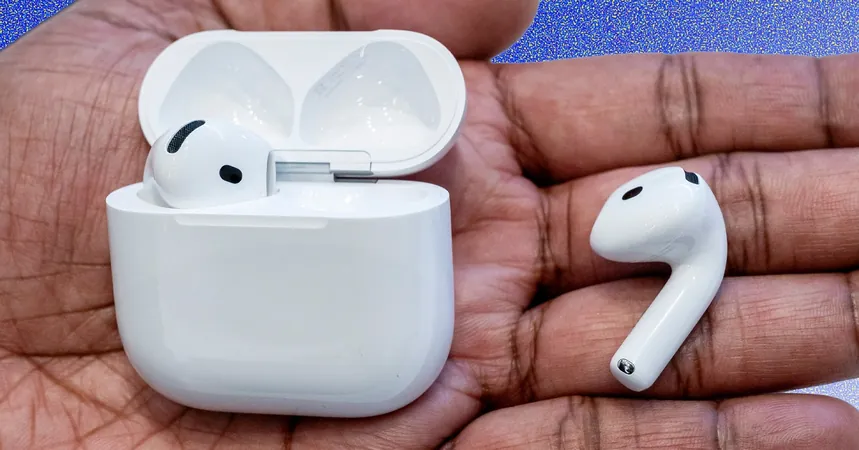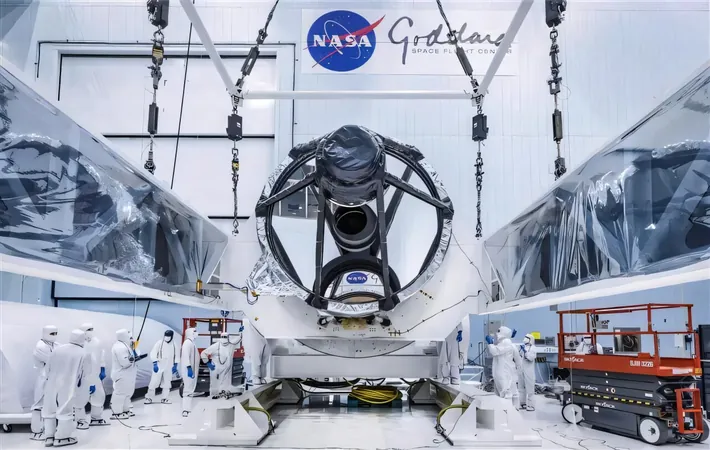
Ingenious Hack: Indian Teens Transform AirPods into Hearing Aids for Their Grandmothers!
2024-11-13
Author: Charlotte
Introduction
When Apple rolled out a software update in early November that introduced groundbreaking hearing aid features for the AirPods Pro 2, Rithwik Jayasimha was eager to buy them for his grandmother. However, his excitement turned to disappointment when he discovered that the feature was unavailable in India. "We unpacked them, and the hearing aid feature was just missing," Jayasimha recounted.
A Collaborative Effort
But instead of giving up, Jayasimha joined forces with his friends Arnav Bansal and Rithvik Vibhu, both of whom share similar challenges with their grandmothers using hearing aids. Together, they devised a unique solution to bypass Apple’s geographic restrictions, allowing them to unlock the hearing aid settings right in Bangalore.
Innovative Solution
The trio constructed a signal-blocking Faraday cage using aluminum foil over a microwave, which essentially turned the appliance into a Wi-Fi jammer. "We think the hearing aid feature itself is incredible; it’s not Apple’s fault we can’t access it here," Jayasimha stated, underscoring their innovative spirit.
Sharing Their Knowledge
As tech enthusiasts with a flair for hardware and software, the group detailed their hack through a technology collective known as Lagrange Point. This initiative quickly garnered attention, resulting in dozens of inquiries from others in India facing similar predicaments with their AirPods.
Bypassing Restrictions
Using a connected iPad, the group illustrated how to circumvent Apple’s regional restrictions effectively. They explored how iOS determines a device's location through various checks, including the connected Apple Store region, timezone, and even the device’s IP address. After realizing that disguising the iPad's location wasn't yielding results, they intensified their efforts to examine the intricacies of iOS's location-determining processes.
Technical Challenges
The challenge involved more than just changing settings; they had to navigate the complex interplay of various geographic indicators, including Wi-Fi SSIDs and device identifiers. This understanding led them to the ingenious use of a microwave, which operates on 2.4 GHz electromagnetic waves—the same frequency used by Wi-Fi. With this setup, they created an effective isolation chamber that allowed them to trick iOS into thinking the iPad was in California, thus enabling the AirPods to function as hearing aids.
Regulatory Challenges
While Apple has launched this feature in over 100 countries to expand accessibility to hearing aid technology, it remains blocked in countries like India due to regulatory challenges. The trio’s clever workaround sheds light on how technical savvy can overcome regulatory barriers temporarily.
Industry Response
As for Apple, the company has yet to respond to inquiries about this hack, which could easily be patched in future updates. Cybersecurity experts like Alan Woodward from the University of Surrey emphasized that the incident illustrates how knowledgeable users can create viable solutions to circumvent apparent safeguards from tech giants.
The Impact of Innovation
The trio is optimistic that Apple’s hearing aid features will officially arrive in India soon. Meanwhile, they are committed to helping others who reached out for assistance, utilizing their modified Faraday cage setup to enable more AirPods for those in need.
Personal Stories
Personal stories emphasize the importance of this innovation; for instance, Bansal shared how his grandmother struggled with conventional hearing aids but now enjoys using AirPods, making her feel less like a patient and more comfortable while watching TV.
Conclusion
In a world where technology often falls prey to regional legalities, these young innovators remind us that creativity and collaboration can offer hope to those seeking solutions—one AirPod at a time!









 Brasil (PT)
Brasil (PT)
 Canada (EN)
Canada (EN)
 Chile (ES)
Chile (ES)
 España (ES)
España (ES)
 France (FR)
France (FR)
 Hong Kong (EN)
Hong Kong (EN)
 Italia (IT)
Italia (IT)
 日本 (JA)
日本 (JA)
 Magyarország (HU)
Magyarország (HU)
 Norge (NO)
Norge (NO)
 Polska (PL)
Polska (PL)
 Schweiz (DE)
Schweiz (DE)
 Singapore (EN)
Singapore (EN)
 Sverige (SV)
Sverige (SV)
 Suomi (FI)
Suomi (FI)
 Türkiye (TR)
Türkiye (TR)